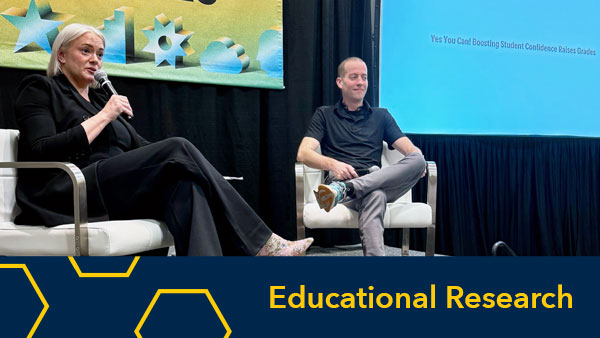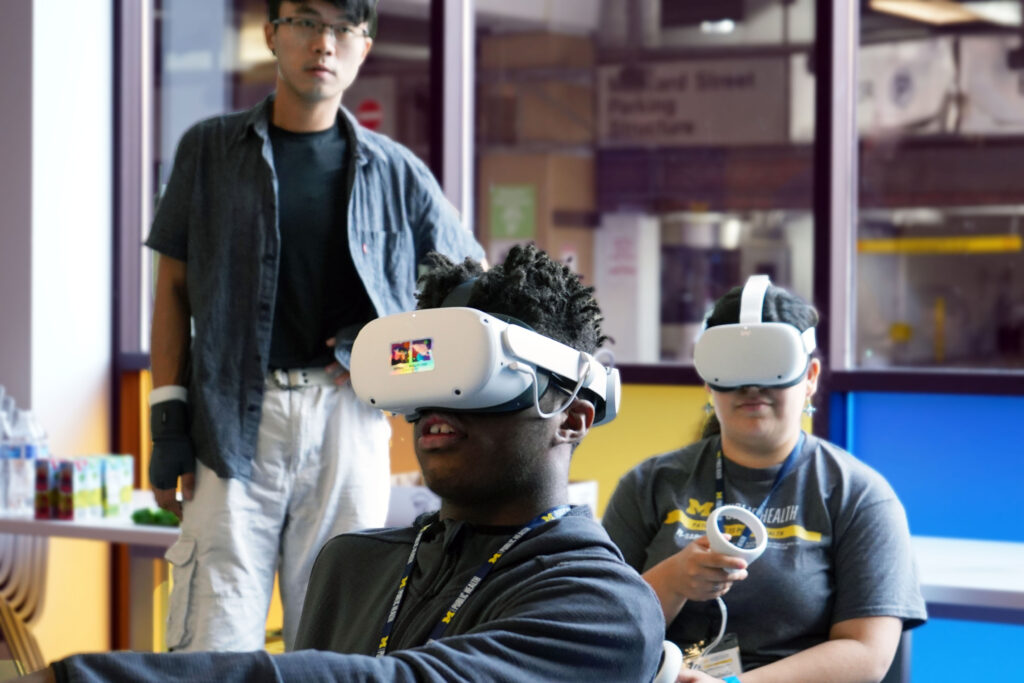
Wolverine Pathways pre-college students from southeast Michigan dive into memorable virtual reality experience
Sean Corp, Communications Lead
In the real world, determining the feasibility of public health and sustainability choices without impacting an existing community is challenging, if not impossible. But this summer, some potential future Wolverines visited the University of Michigan campus and did just that with the help of virtual reality.
The students were participating in Wolverine Pathways, a program that serves students from under-resourced communities with year-round programming that helps prepare them for college or other post-secondary opportunities. Part of the program includes a trip to the Ann Arbor campus to experience campus life and engage in several learning activities. This summer, Wolverine Pathways students attended the School of Public Health’s Pathways to Public Health High School summer program where they learned about public health and sustainable community development by exploring virtual spaces.
High school students from Detroit, Southfield, and Ypsilanti put on VR headsets and worked together to transform a city to benefit its virtual residents. The work represents a joint effort of the Center for Academic Innovation, and the schools of Public Health, Environment and Sustainability, and Information.
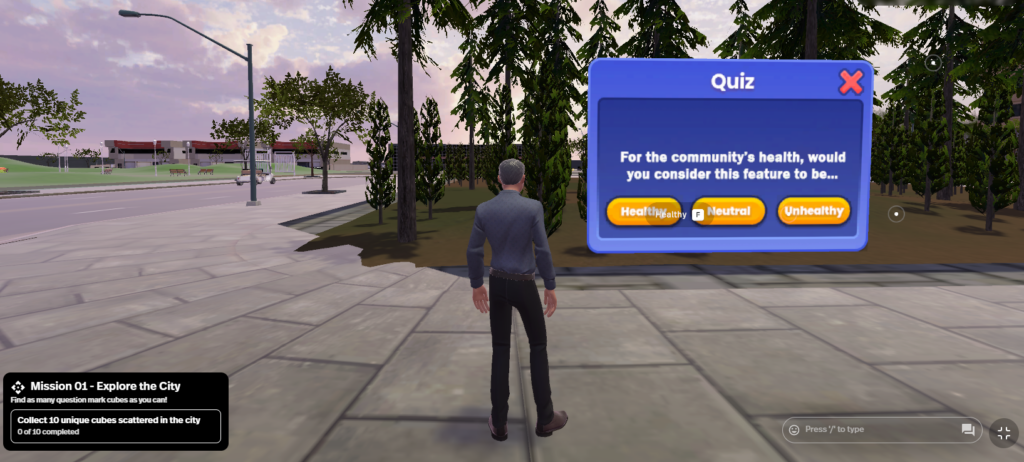
The virtual experience allowed students like Diamond Cook and Macey McDaniel to connect with public health in new ways. While the virtual space might have been new, the issues faced felt familiar.
“When you look online, people assume the biggest problem facing our cities are things like crime. But in reality, so many other factors are at play that truly impact everyone every day,” said McDaniel, 15, a student from Southfield. “Things like education, access, what food people have access to, are big challenges.”

Cook, 16, also from Southfield, said it was fun, but what she found most interesting about the experience was how challenging it was to make the best choices possible for promoting health in communities.
“I really started to understand that public health is not as easy as it looks,” she said. “Money is always tight. So learning how to make a city that is healthy for our people takes time, and it was interesting to learn about what it takes to do it right.”
That experience was the brainchild of Simone Charles, clinical associate professor of environmental health sciences at the School of Public Health. She wanted to create a learning opportunity for pre-college students to explore some public health challenges that communities routinely face. Her goal was to use virtual reality to help students visualize issues, explore public health issues in new ways, and develop problem-solving skills. She mapped out the learning objectives, content, and engagement elements based on the desired learning goals and evaluation metrics.
Charles was inspired by how she saw her nephew navigate games during their virtual calls during the pandemic, which limited interactions to shared screens.
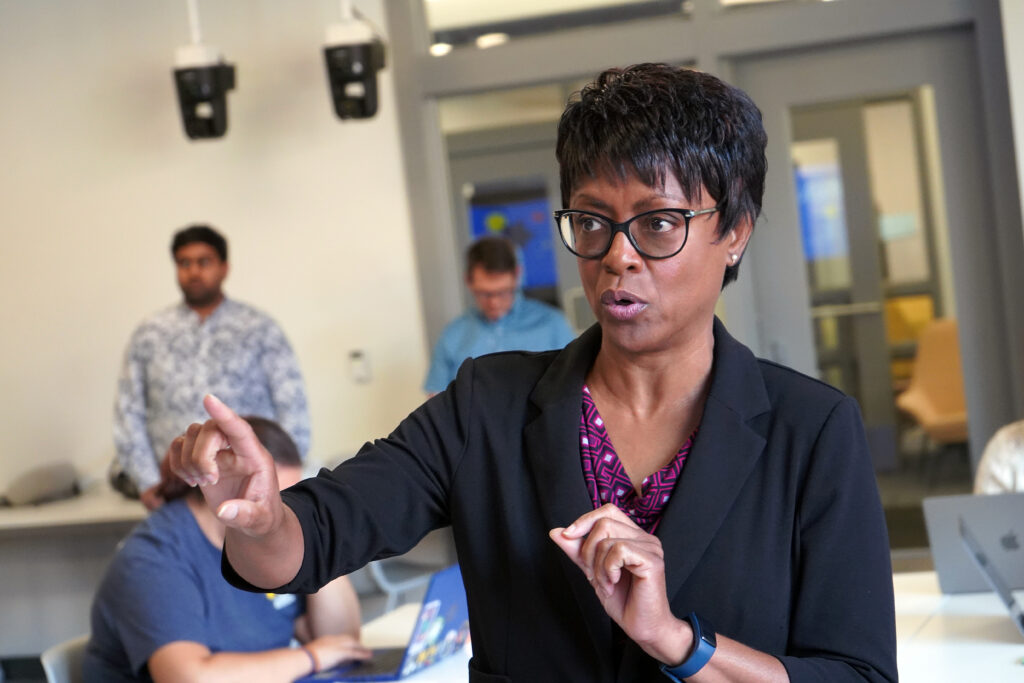
“I realized there is so much learning that could be achieved in that space. I envisioned how I might use that space and game concepts to provide an opportunity to teach public health principles,” Charles said. It also aligned with Charles’ work in the School of Public Health’s Pathways to Public Health program, which works to increase public health access to underrepresented scholars.
She connected with the Center for Academic Innovation to move the idea forward, and the schools of Environment and Sustainability, and Information also joined as project partners to collaboratively build a virtual interactive city. In an effort to both engage and challenge the students, the 360-degree virtual experience was built like a game. Students entered an urban landscape facing several public health challenges and had a limited budget with which to make a number of decisions about features.
“While building the experience, we wanted to ensure it was student-centered.” Charles said. “Our goal was to create a connection to their personal values and perspectives while encouraging students to consider new arguments and encourage decision-making.”
Building SaluCity – a play on salubrious, meaning health-giving–was a combined effort of Charles, Mark Lindquist, associate professor of landscape architecture at the School of Environment and Sustainability, Ramiro Serrano Vergel, lecturer at the School of Information, Ryan Koepp, XR student fellow at the center, Paula Vinales Bowman, program manager for Pathways to Public Health within the School of Public Health, and several graduate students.
“Our students worked tirelessly to ensure everything was done, and done with energy and enthusiasm,” Charles said. “We spent many hours feverishly working on the virtual experience in a short three-month span so we could ensure students could enjoy the experience,” she said.
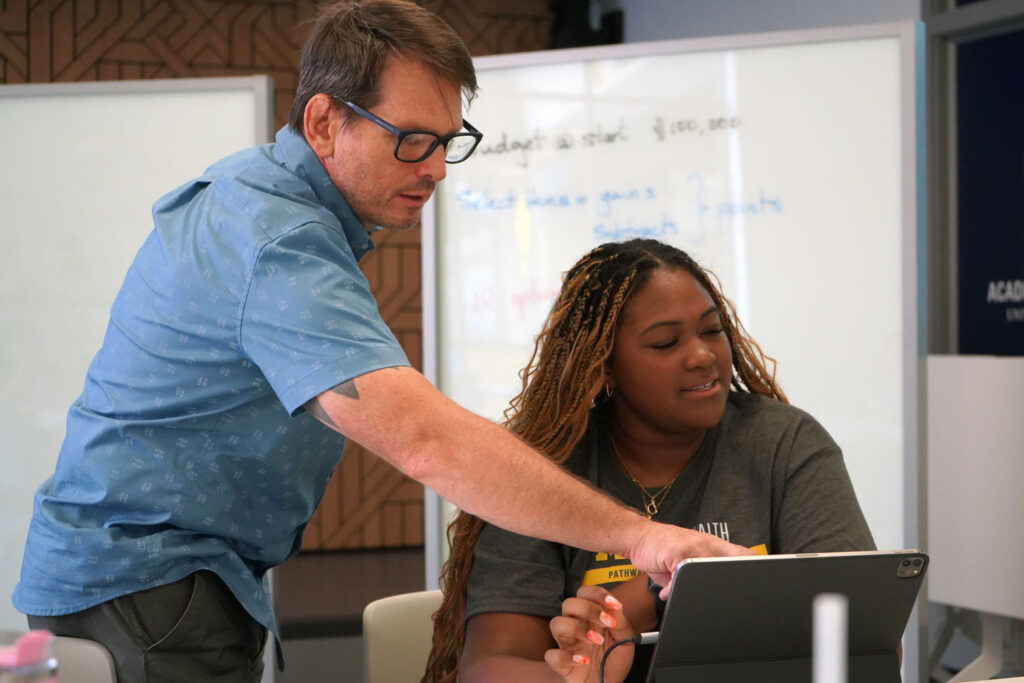
Koepp, who obtained his master’s degree in educational design and technology from U-M’s Marsal Family School of Education in December 2023, focused on working with Charles to ensure the learning outcomes could be realized in the virtual environment while the other graduate students focused on building the virtual assets.
“Our role is not only to provide leadership on these kinds of projects, but to offer pedagogical best practices for learning in a virtual space. We worked together to make sure the game was fun to play while also hitting all the learning objectives,” Koepp said.
The project is a perfect encapsulation of why Koepp started a second career in education after retiring as a firefighter.
“I get really excited any time we can find a way to reduce the digital divide. I got into this to increase access and equity,” Koepp said. “Technology moves so fast that when students today are falling behind they are getting left behind. We are working to change that. Any time your work helps connect people to experiential technology it is a good day.”
